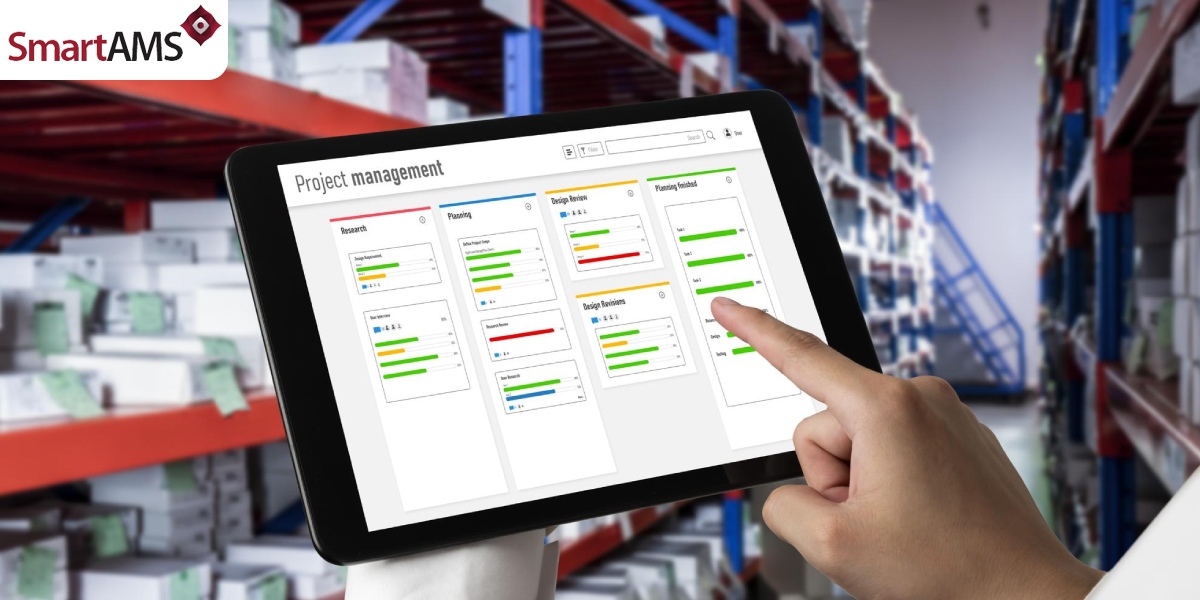Managing inventory entails several tasks like ordering, tracking, and budgeting. Each task is as important as the other. Traditionally, a handful of employees are responsible for keeping up with those inventory dynamics. With a pen and paper, or spreadsheet software, staff members inspect assets visually and update databases every time there’s a development. Such an approach is hardly efficient and unreliable.
Manual inventory management is a thing of the past. Not only is it immensely time-consuming, but it also opens up room for errors. The manual checking of inventory creates data silos. And overall, it hampers true business potential.
Gaining visibility and insights into inventory propels operational speeds with accuracy. Those advantages come with streamlining inventory management. The best tool for this purpose is an inventory management system.
In this article, we discuss what an inventory management system is and how it helps streamline inventory. Finally, we go over the advantages of using one. Let’s get started.
What is an inventory management system?
An inventory management system is a dedicated software application designed for efficiently governing every inventory aspect. Tracking stock levels, order placements, and deliveries are some critical functions the software performs. It contains several cutting-edge modules for monitoring, tracking, and controlling inventory.
Comparing an inventory management system with spreadsheet software proves the latter is obsolete for overseeing assets. Because the manual labor inventory management system cuts down is significant. And the software harnesses automation technology. Furthermore, it is a one-stop tool to manage individual and group assets from budgeting to disposal. So how does this specialized software system fare in streamlining inventory and improving business potential? We find out.
Streamlining inventory management processes
Let’s go over five ways an inventory management system helps improve the inventory process. They result in the reduction of costs, and time, leading to an increase in returns on investments.
Automate inventory tracking
Near Field Communication (NFC) and Radio Frequency Identification (RFID) tags transmit stock quantity information in real-time. These technologies can integrate with an inventory tracking system, providing precise information about the number of assets and also their whereabouts. The software can also connect with barcode scanners, facilitating the retrieval of asset information from barcode tags instantly.
Get an overview of the latest asset developments
Inventory management systems contain a comprehensive dashboard module. It provides an eagle’s eye view of recent developments among assets. They include:
- The total value of assets
- Asset transfer requests and movements
- Pending asset deliveries
- The total number of assets
- Critical notifications
Set minimum stock count
Running out of assets at the last minute can spell trouble to business continuity. Traditionally, employees take count of stock to assess whether or not to place repurchase orders. On the flip side, an inventory management system automates asset tracking. And it allows for setting minimum stock counts. When assets fall below minimum stock levels, the system throws up alerts.
Forecast asset demand
An inventory management system keeps tabs on the assets most frequently in use. The software also tracks the time of the year in which assets surge in popularity. Tracking these parameters over a few weeks, months, or years enables the inventory system to forecast asset demand. With that information, asset managers can place asset orders accordingly.
Gain inventory insights
The generation of inventory reports such as utilization, average lifespan, and cost of ownership is crucial for optimizing inventory management. Asset management systems automate this process. The software extrapolates valuable insights by pulling in data from various sources like asset acquisitions, transfers, and disposals.
Enhance your inventory management process
Poor inventory management techniques can rack up costs and impede operational efficiency. Eliminating them and improving inventory tasks is as simple as investing in a reliable asset management application like SmartAMS. It is automation-enabled, feature-rich, secure, and cloud-enabled. Streamline your inventory management processes by purchasing SmartAMS today. Reach out to us to learn more.
